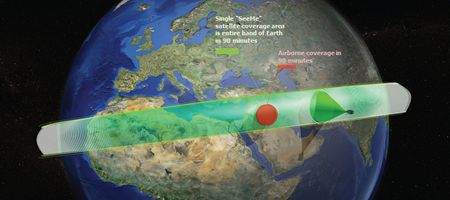The Pentagon’s calling for proposals for a fleet of cheap, disposable satellites to give soldiers access to battlefield maps and images.

DARPA’s Space Enabled Effects for Military Engagements (SeeMe) program would allow small squads and individual teams to receive imagery of the surrounding terrain directly from a small satellite at the press of a button.
Neither military or commercial satellites can deliver this right now, thanks to a lack of opportunity to make satellite overflights, an inability to receive direct satellite downlinks at the tactical level and restrictions on information flow.
“We envision a constellation of small satellites, at a fraction of the cost of airborne systems, that would allow deployed warfighters overseas to hit ‘see me’ on existing handheld devices and in less than 90 minutes receive a satellite image of their precise location to aid in mission planning,” says Dave Barnhart, DARPA program manager.
“To create inexpensive, easily manufacturable small satellites costing $500K apiece will require leveraging existing non-traditional aerospace off-the-shelf technologies for rapid manufacturing, such as the mobile phone industry’s original design manufacturers, as well as developing advanced technologies for optics, power, propulsion and communications to keep size and weight down.”
The SeeMe constellation would consist of around two dozen satellites, each of which would last only 60 to 90 days in a very low-earth orbit, before de-orbiting and burning up completely. DARPA stresses that no space debris would be left behind, and there’d be no re-entry hazard.
The program would probably take advantage of DARPA’s Airborne Launch Assist Space Access (ALASA) program, which is developing an aircraft-based satellite launch platform for payloads of around 100 lbs.
“SeeMe is a logical adjunct to UAV technology, which will continue to provide local or regional very high-resolution coverage, but which can’t cover extended areas without frequent refueling,” says Barnhart.
“With a SeeMe constellation, we hope to directly support warfighters in multiple deployed overseas locations simultaneously with no logistics or maintenance costs beyond the warfighters’ handhelds.”






